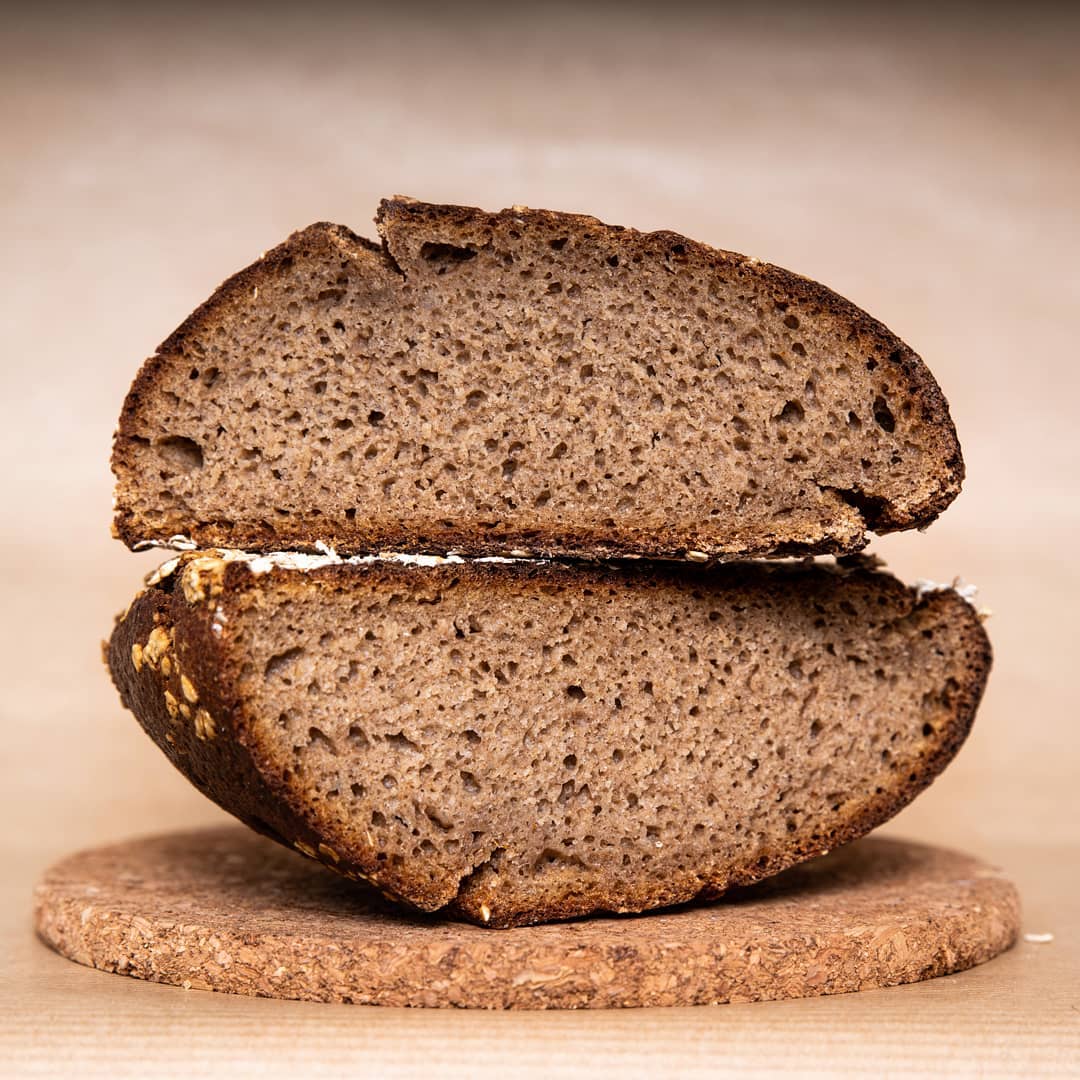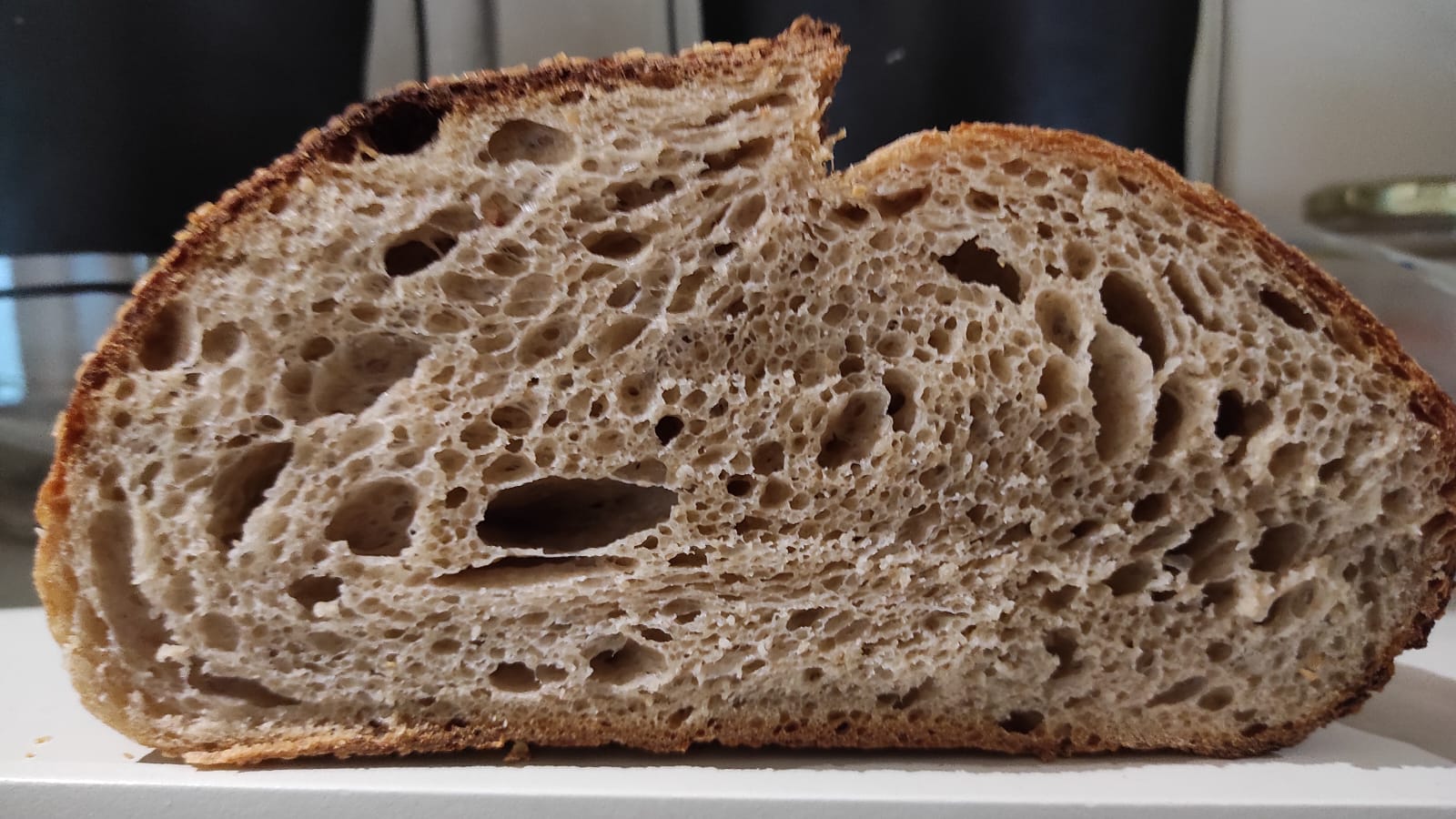Typically a good shiny crust is from steam and good surface tension on the shaped loaves. Usually if I’m baking something that needs a good crust, I’ll put a cast iron skillet on the rack beneath the bread, and preheat it with the oven. While the oven preheats, boil a cup of water. As soon as you load the bread, pour the boiling water into the hot skillet, then shut the door right away. Make sure you wear thick oven mitts so you don’t burn your arms with the steam!
- 6 Posts
- 6 Comments
Thanks! it’s basically just Peter Reinhardt’s recipe. It’s a straight dough with a poolish. Makes 3 baguettes or 6 demibaguettes (like the photo).
Poolish
96g bread flour
103g water
Pinch dry yeast
Ferment at room temp overnight.
Dough
454g bread flour
284g water
30g whole wheat flour
10.5g salt
3.75g dry yeast
Poolish
Slap & fold to develop (see Richard Bertinet’s videos on the topic. Really handy for wet doughs like this). It’ll firm up as you go, enough to where you can knead it the usual way. Bulk ferment at 75F for about two hours. Do three stretch-and-folds during the bulk. Dough should double in size.
Divide and preshape into bâtards or oblong rounds, rest 10-20 minutes, then shape into baguettes. Getting the shaping right is hard and also very important… you need lots of surface tension to hold a good crust.
Place onto a floured couche, add some flour on top, then cover with a wet tea towel or plastic wrap and refrigerate at 38F for 4-12 hours, the longer the better (but only if your fridge is cold enough!)
When they’re proved, score and bake on a stone at 450F for about 18 minutes. I usually preheat to 500, boil a cup of water, and leave a cast iron skillet on a rack below the baking stone. As soon as I load the bread, I pour boiling water into the skillet and then shut the door immediately. Adjust the temperature as needed.
i am old and cis but trans shitposters are the best shitposters, this is indisputable. you have my support
This is kind of subjective… what kind of loaf are you trying to make? There’s a million different viable scoring patterns depending on the shape. If you’re trying to make a traditional demibaguette you’d want to have maybe 3 diagonal cuts overlapping each other by about a third going down the loaf, but there’s really no hard and fast rules there.
They mean 30 degrees from horizonal, or compared to the cutting surface. You want to hold the lame parallel to the surface and then lift the edge that’s further from the loaf by about 30 degrees.
It also helps to start the cut with the corner of the lame. I personally got better ears by going in a second time to reinforce the same cuts.




If you want to be taken seriously online, don’t use stupid colloquialisms like “way more seriously.” Use grammatically correct phrasing like “far more seriously.” Start writing like an adult.